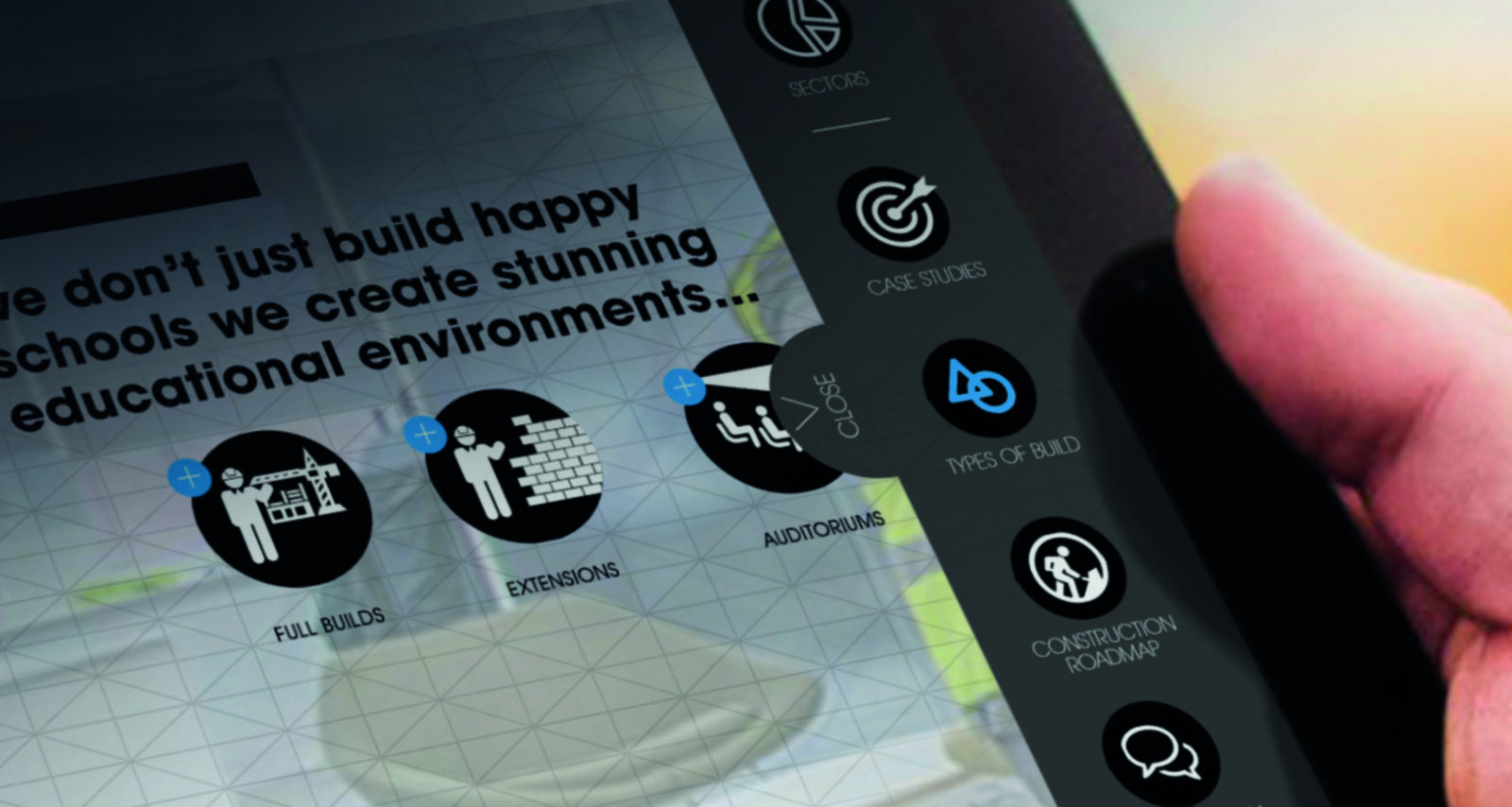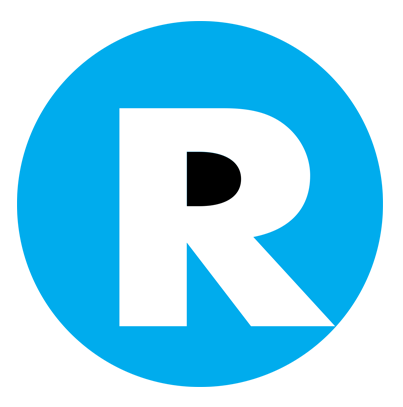CASE STUDY
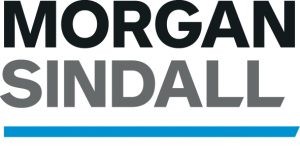
Morgan Sindall required a digital marketing tool that was aimed at aiding client facing roles where up-to-date company information could be delivered and updated quickly and easily, providing a smooth and easy to ‘follow up’ sell process. The delivery tool needed to show and expand all various aspect of the Morgan Sindall operation across its many facets.
Detailed analytics and research was carried out with key stakeholders to identify user habits and delivery expectations. It became clear from the research that the tool needed to deliver a number of key objectives for it to be adopted throughout the business – The end solution needed to be seen as a portable electronic brochure to deliver current business frameworks, contract maps, case studies as well as showcasing key sectors with up to date costs and delivery time frames.
The UX solution delivered a simple tap and slide solution allowing stakeholders to comfortably use, navigate and deliver a dynamic front end solution with complex back end deliverables.
Methodology Processes
SETTING GOALS & OBJECTIVES
THE PROJECT – A Sales and business presentation tool that could be easily personalised, up-datable and expandable to showcase all various aspects of the Morgan Sindall operation across its many facets.
OBJECTIVES – The customer journey to lead generation. BuDi is the digital sales tool for all external facing staff to use in order to take customers through the buying process in order to place an order with us. The tool can be used to either introduce customers, confirm what they already know, and provide further information to them so that they can make informed decisions and feel happy with using Morgan Sindall as a construction provider.
REQUIREMENT – Digital platform. The chosen platform must be compatible with Android and Apple products. In the main we foresee this being presented on Ipads.
PRIMARY AUDIENCE – New business contacts with large civil engineer contracts for tender within specific market sectors ie Eduction, Defence.
CONDUCTING INTERVIEWS
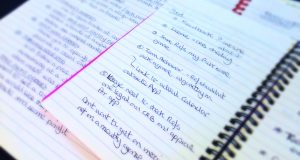 Conduct interviews with key Morgan Sindall personal/stakeholders and senior management team members to understand their requirements of the platform for the business – its aims and goals. Research past projects to understand from their customers how they perceived the Morgan Sindall sales, build, deliver and service processes/procedures be it positive or negative.
Conduct interviews with key Morgan Sindall personal/stakeholders and senior management team members to understand their requirements of the platform for the business – its aims and goals. Research past projects to understand from their customers how they perceived the Morgan Sindall sales, build, deliver and service processes/procedures be it positive or negative.
ESTABLISH KEY AUDIENCES
Interviewing key stakeholders at Morgan Sindall helped to identify the correct audience for the product/service and characteristics of study participants. As with every product or service, the best offering comes from carefully identifying the target audience, their needs, satisfaction levels and pain points. In this case we had 3 key targets – 1. Introduction meetings, 2. New business direct 3. Existing clients.
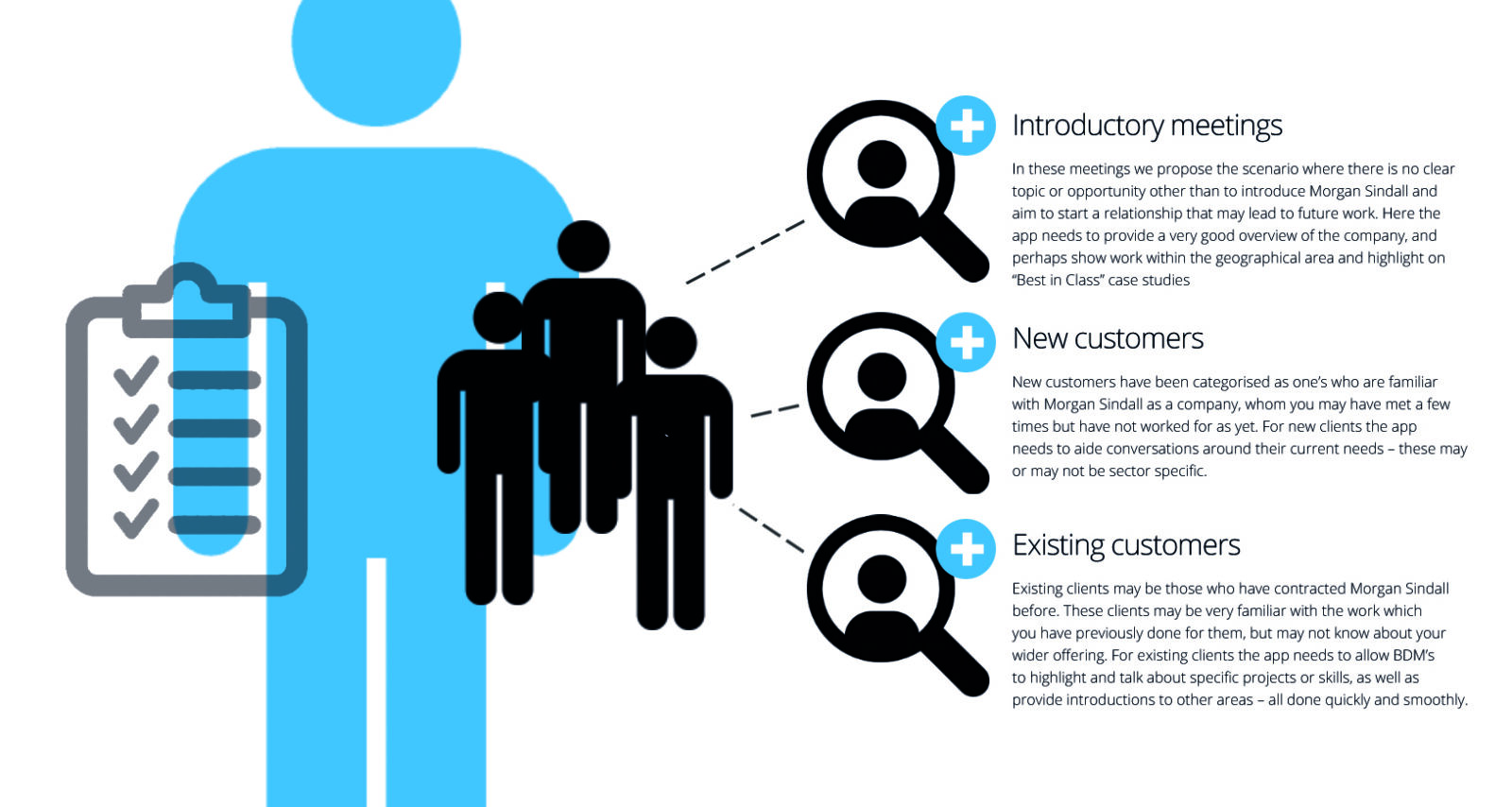
BUILDING PERSONAS
Once the key audience had been identified, individual personas were created from information gathered from observations, research and interviews. This also included, social and demographic characteristics, needs, desires, goals, habits, expertise, cultural background and motivations, likes, dislikes, behaviour patterns, processes:
- Who are they (Business level, Age, gender, status, Education, like, dislike, relevance)
- How do they find information (Desktop, Laptop, mobile devices, forums, news, social)
- Their Goals/What they require ( Quick info access, trending info, first to know)
- Pain Points
- Motivational aspects
- Needs (What do they need, who do they need to satisfy, who they report to and information required)
- Solution ( Interactive design, news, video content, case studies, costing structure, feedback, contact info).
SCENARIOS
Creating various scenarios helped us to understand how specific users required specific information about areas of the Morgan Sindall operations. By identifying these specific users needs and goals together with the navigation process helped in understanding why a user selected the route they did.
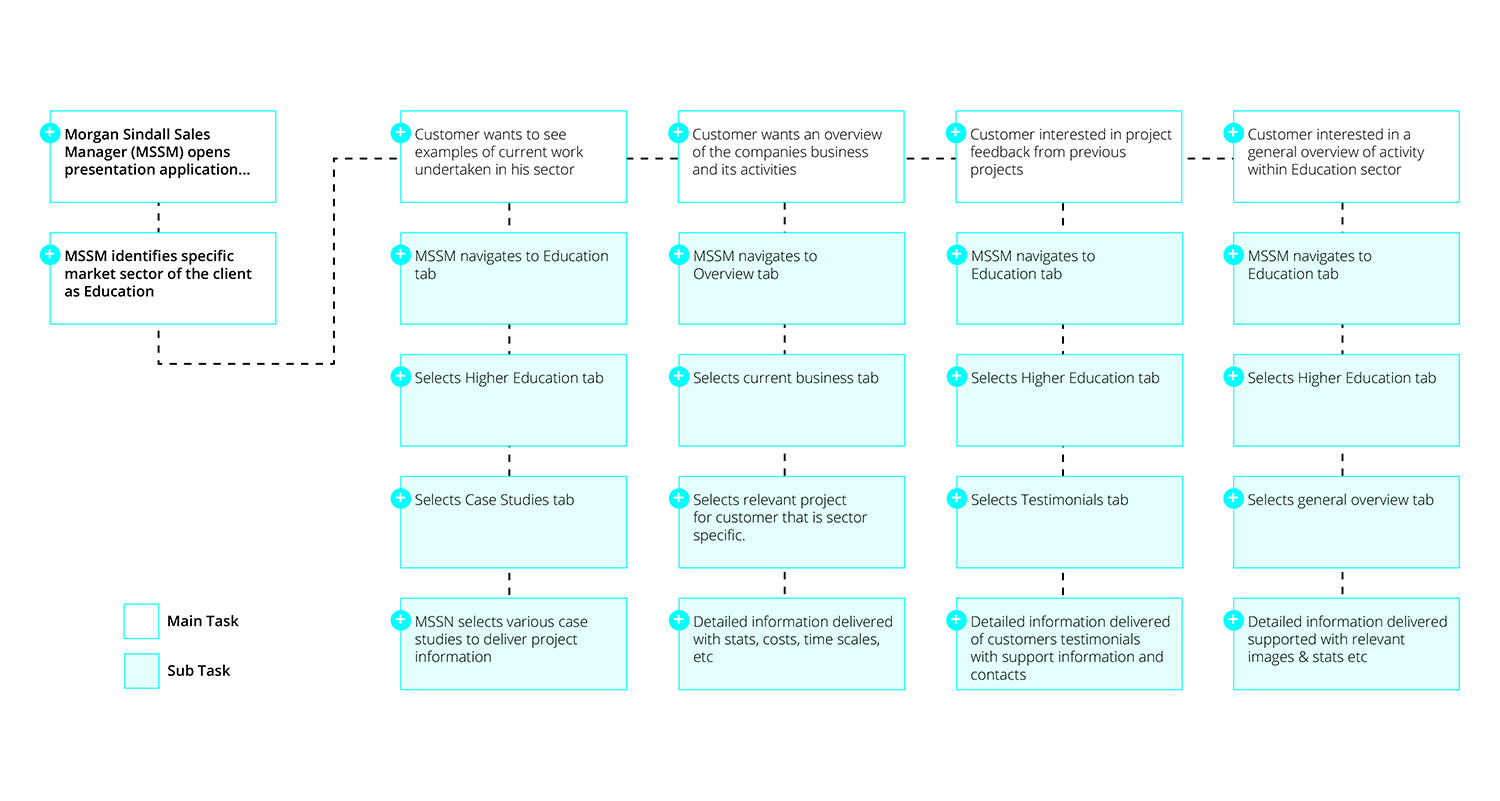
USER JOURNEYS & STORIES
Every user journey can be different. There can be numerous routes through a website/application depending on the information that a user is looking to gather. In this case we identified 6 specific users of the application tool and from these we were able define their journeys:
- Business Development Directors
- Business Development Managers
- Area Directors
- Framework Managers
- Directors in title
- Business development coordinators
Each of their paths helped in refining the journey process and the information they were looking to access.
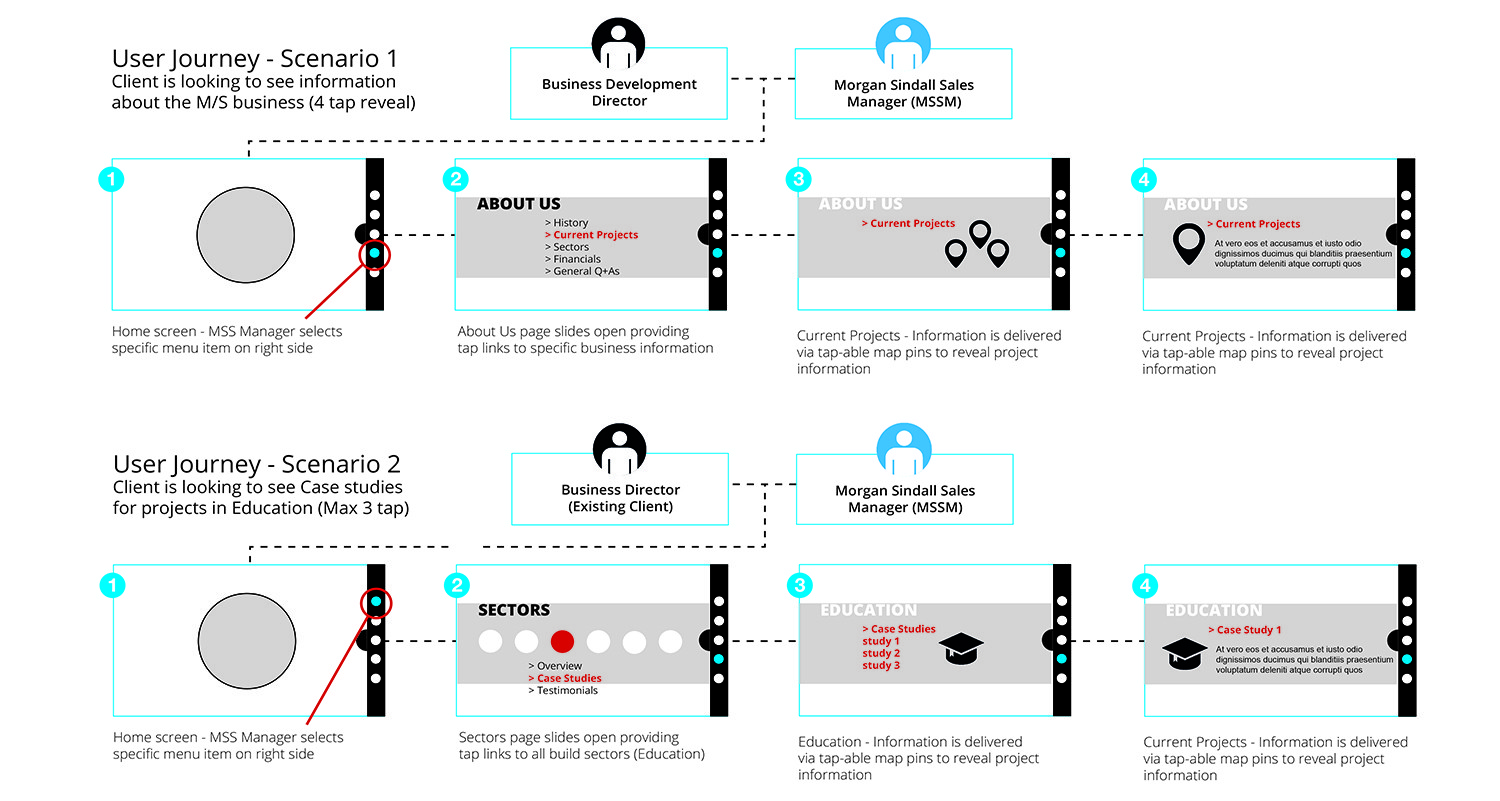
SITE MAP
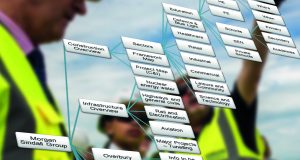 A well executed site map for Morgan Sindall was a vital part of the user journey. After a number of meetings we
A well executed site map for Morgan Sindall was a vital part of the user journey. After a number of meetings we
re-defined the menu structure that allowed the Morgan Sindall Sales Managers to arrive at specific locations in far fewer steps – helping them to deliver key information far quicker and more accurately
CONTENT AUDIT & INVENTORY
The content audit provided details as to the level of quantitve and qualitative data available to us to use. Through various stakeholder discussions and information gathering we were able to analyse:
Content that required copy writing, updating, consolidating, be removed, be edited, gap opportunities & undiscovered, new content for marketing opportunities.
COMPETITOR RESEARCH
Morgan Sindall have a diverse range of skill sets within the ‘Building’ sector, and therefore numerous competitors spread across a broad range of design and build disciplines. We were able to identify a number of companies that competed in heavy civil engineering through large scale housing projects. Many of the competitors seemed to follow similar UX strategy and techniques, however, it was difficult to find any specific presentation tools used by individual companies to compare.
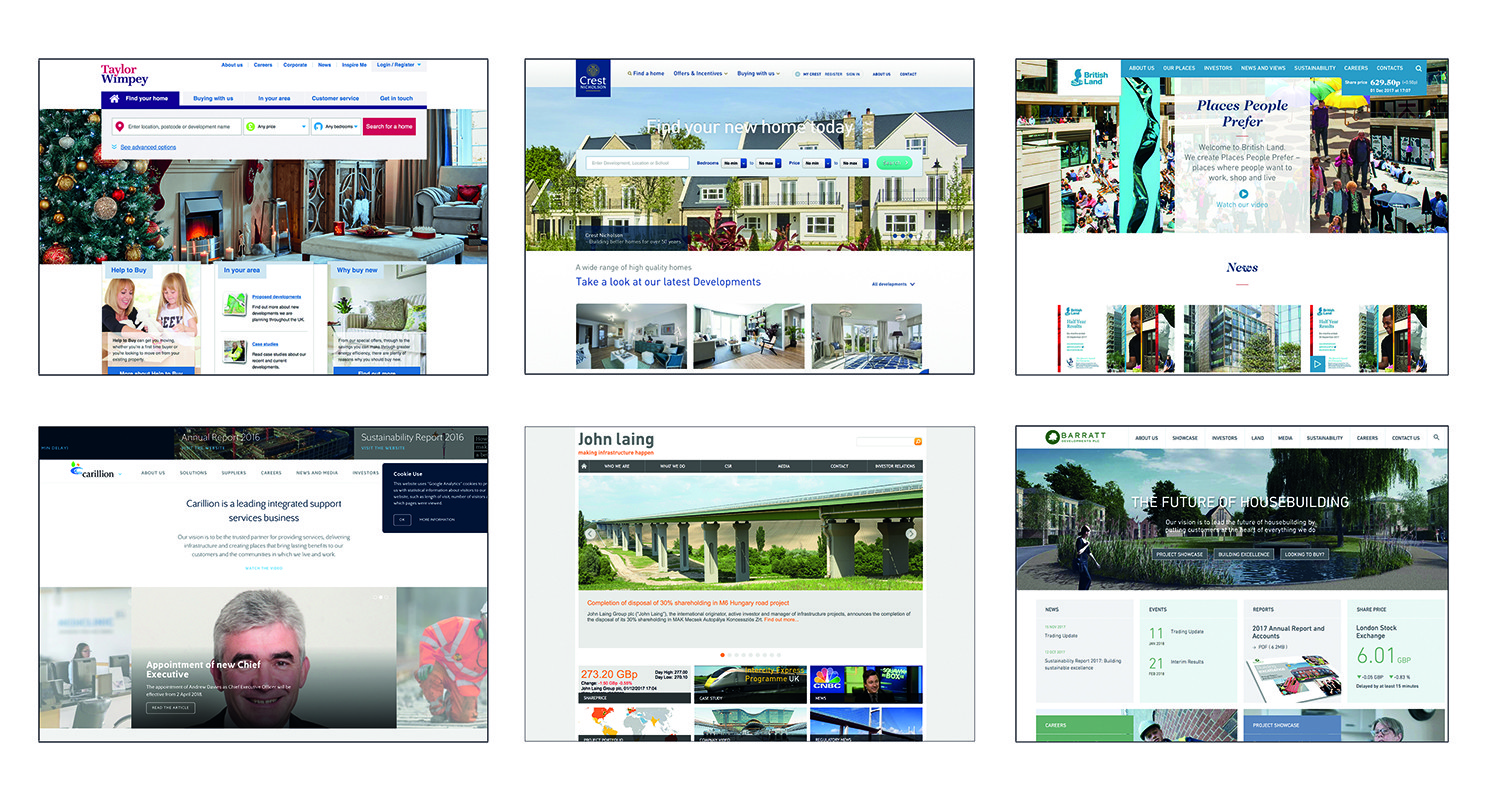
SKETCHING
This sketch process allows for early validation of the UX process from the information gathered. Involving user groups and feedback it allowed us to determine a sound direction without too much time being spent at this early stage on detailed design approaches, addressing potential problems areas quickly and easily.
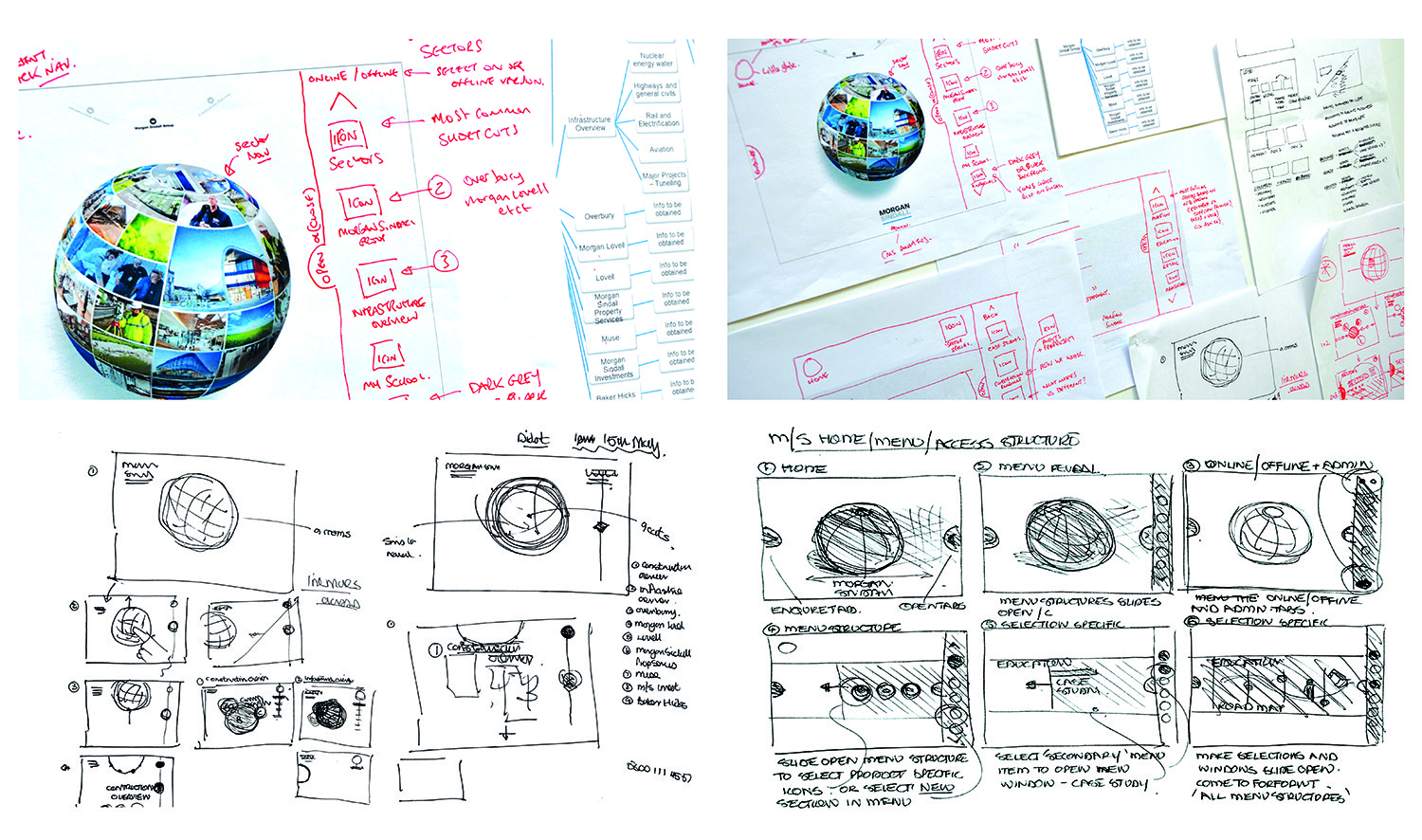
WIREFRAMES
The wireframe process determined a clearer direction of the UX process from the low fidelity prototypes. The wireframes help the team and stakeholders focuses on space allocation, content prioritization of, functionalities and intended behaviours. It helped determine information hierarchy of the design without being too specific on design tone.
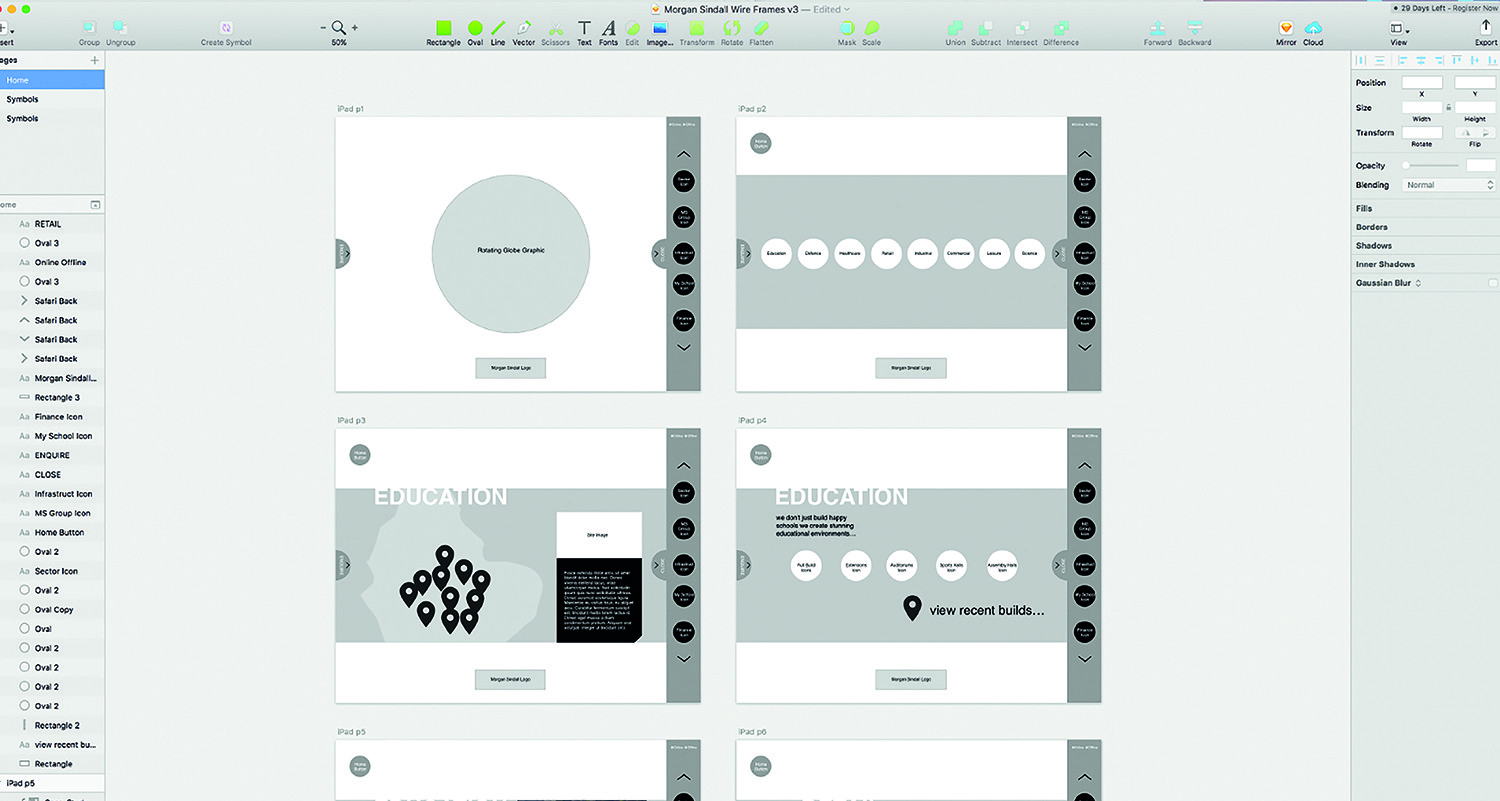
ICONOGRAPHY
From the outset the client stressed a requirement for the use of iconography throughout the application. This helped to communicate many different types of top line and secondary menu sections on a user interface. The creative treatment of the icons needed to be simple yet eye catching and also communicate subject/topics that were easily recognised by users.
![]()
HIGH FIDELITY PROTOTYPES & STYLE GUIDES
The final visual designs help focus all users as to the design style and tone. Feedback from the user research information together with the wire frame direction helped to set the design tone. This process is a sub-discipline within the UX process, contributing to UI Design tone, delivering colour information, style, tone, graphic treatment guidelines and specific specifications for final production
USER TESTING
User testing of the application both internally and externally helped to determine final amends and changes during the design/wire frame process. Watching users trying to accomplish specific tasks helped to identify usability problems that could be addressed and re-tested prior to the final build processes.
